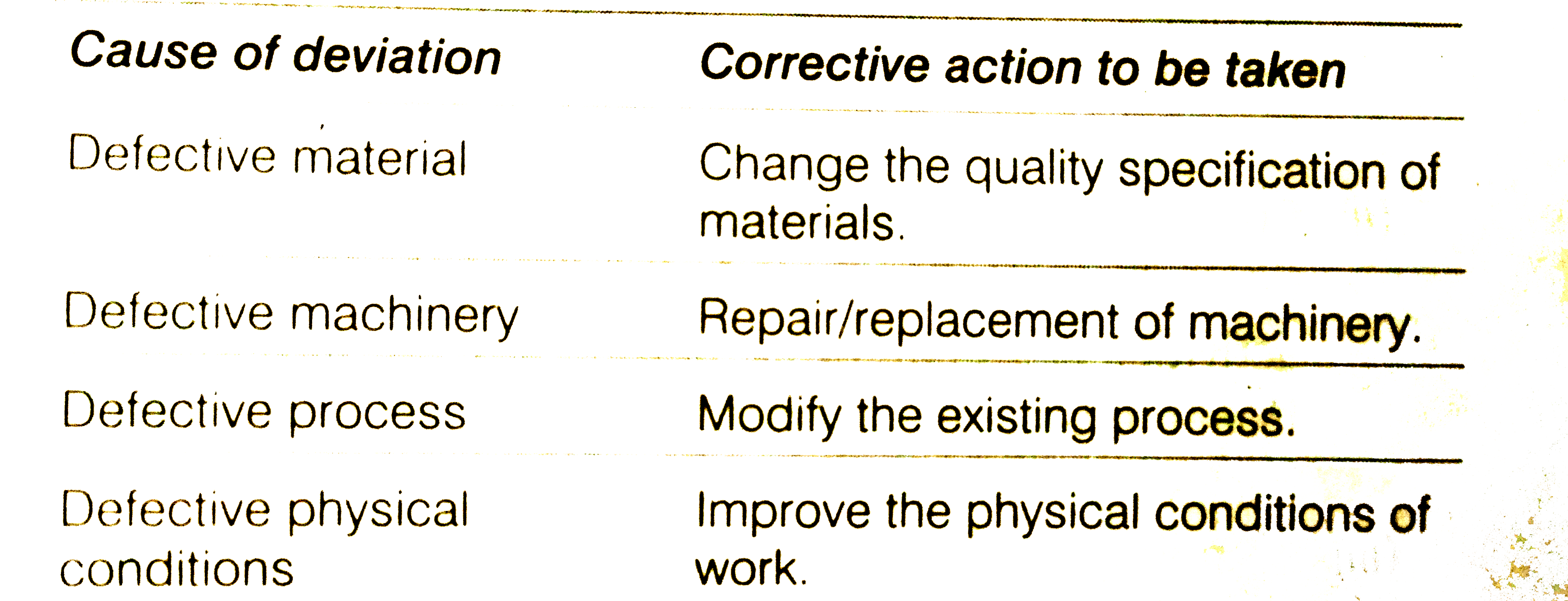How Saco Defense Controlled the Situation ?
At Saco Defense, lack of quality had created a crisis. When the government shut it down because it wasn't meeting quality standards, Saco brought back a TQM programme that had restored quality, increased production, and decreased costs. Based in Saco, Maine, the 178-year-old defense company was unable to adhere to the U.S. Navy's quality standards. Although Saco's weapons worked well, the government questioned the company's quality practices and policies. For example, if an employee discovered a defective bolt near the completion of an assembly process, the operator would replace the bolt but not document the problem. The presence of one defective bolt might mean that others from the same supplier or batch were also bad but were going undetected. Without follow-up, the underlying materials problem would not be identified and resolved.
To solve these problems Saco Defense went through an organisational transformation. The key elements were : (1) empowering employees by giving them the responsibility and accountability for their performance, including the authority to halt production to correct problems: (2) forming work cells, that is, small businesses within the company that manage their production with limited supervision, and (3) reducing the workforce from 760 to about 450 employees and eliminating several layers of management. In addition, ongoing improvement projects at the company range from reducing cycle time and product cot to implementing programmes for skill integration. Productivity has increased, turnover is down, and the company pans to expand its international business.
Source Stoner, A.F. James, R.Edward Freeman and Daniel R. Culbert, Jr., Management, Prentice-Hall of India Pvt. Ltd., 1998 (Ref: Joyce E. Santora, 'A Quality Program Transforms Saco Defense', Personal Journal, May 1993)
Which step of controlling is reflected in para 2 of the above case ? Explain
Taking corrective action This is the final step in which manager takes corrective measures to bring back everything on track in the organisation i.e. according to set plans, corrections are required in KRAs, which are critical to the success of the organisation, or, in areas where deviations go beyond the permissible limits.
Corrective action may involve traning of employees, hiring labour for extra time, replacement of machinery, etc.
Sometimes, if deviations cannot be corrected despite the best efforst of managers, standards may be revised.

Topper's Solved these Questions
- CONTROLLINGBook:ARIHANT PUBLICATIONChapter:CONTROLLINGExercise:CASE STUDIES 5
Explore 1 Video
- CONTROLLINGBook:ARIHANT PUBLICATIONChapter:CONTROLLINGExercise:CASE STUDIES 6
Explore 2 Videos
- CONTROLLINGBook:ARIHANT PUBLICATIONChapter:CONTROLLINGExercise:CASE STUDIES 3
Explore 1 Video
- CONSUMER PROTECTION Book:ARIHANT PUBLICATIONChapter:CONSUMER PROTECTION Exercise:CBSE Examinations Archive Long Answer Type Questions
Explore 7 Videos
- DIRECTINGBook:ARIHANT PUBLICATIONChapter:DIRECTINGExercise:CBSE Examinations Archive (LONG ANSWER TYPE)
Explore 12 Videos
Similar Questions
How Saco Defense Controlled the Situation ?
At Saco Defense, lack of quality had created a crisis. When the government shut it down because it wasn't meeting quality standards, Saco brought back a TQM programme that had restored quality, increased production, and decreased costs. Based in Saco, Maine, the 178-year-old defense company was unable to adhere to the U.S. Navy's quality standards. Although Saco's weapons worked well, the government questioned the company's quality practices and policies. For example, if an employee discovered a defective bolt near the completion of an assembly process, the operator would replace the bolt but not document the problem. The presence of one defective bolt might mean that others from the same supplier or batch were also bad but were going undetected. Without follow-up, the underlying materials problem would not be identified and resolved.
To solve these problems Saco Defense went through an organisational transformation. The key elements were : (1) empowering employees by giving them the responsibility and accountability for their performance, including the authority to halt production to correct problems: (2) forming work cells, that is, small businesses within the company that manage their production with limited supervision, and (3) reducing the workforce from 760 to about 450 employees and eliminating several layers of management. In addition, ongoing improvement projects at the company range from reducing cycle time and product cot to implementing programmes for skill integration. Productivity has increased, turnover is down, and the company pans to expand its international business.
Source Stoner, A.F. James, R.Edward Freeman and Daniel R. Culbert, Jr., Management, Prentice-Hall of India Pvt. Ltd., 1998 (Ref: Joyce E. Santora, 'A Quality Program Transforms Saco Defense', Personal Journal, May 1993)
Explain the principles that are followed while taking corrective action
View SolutionWhat are the qualities of a good citizen?
View Solution
Knowledge Check
Quality depends on
AIntensityBLoudnessCTimbreDFrequencyMagnetite is a good quality ore of
AcopperBironCbauxiteDsodium saltMagnetite is a good quality ore of
ACopperBIronCBauxiteDSodium salt
